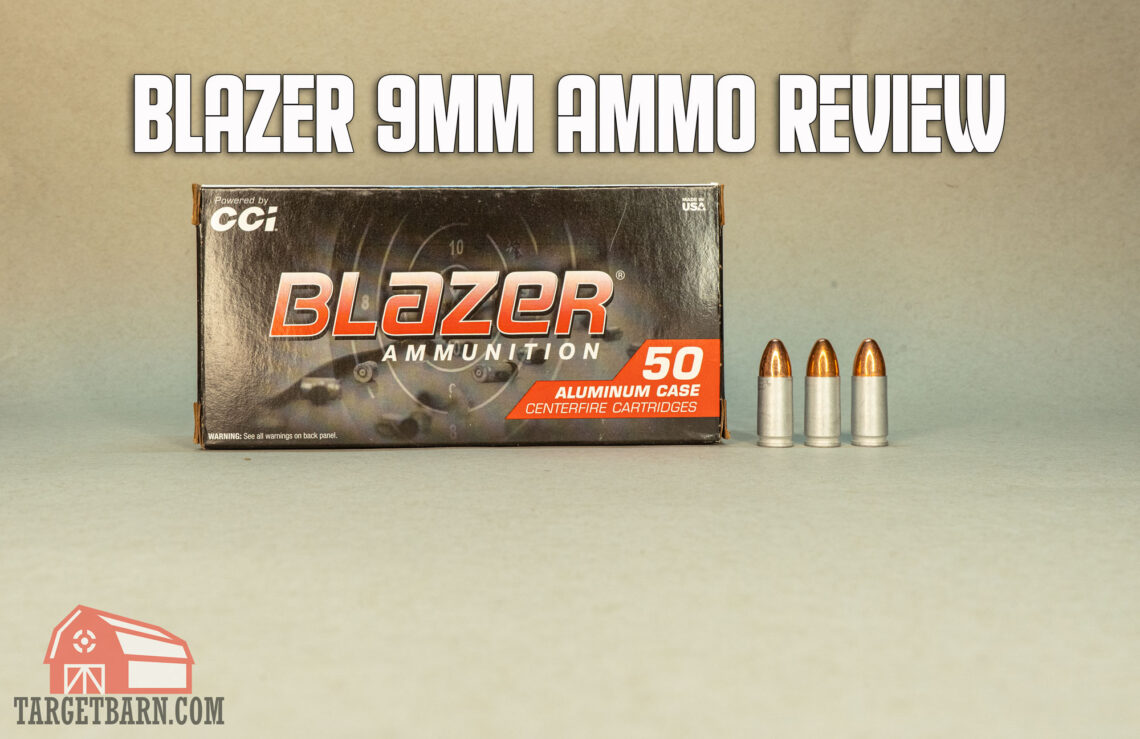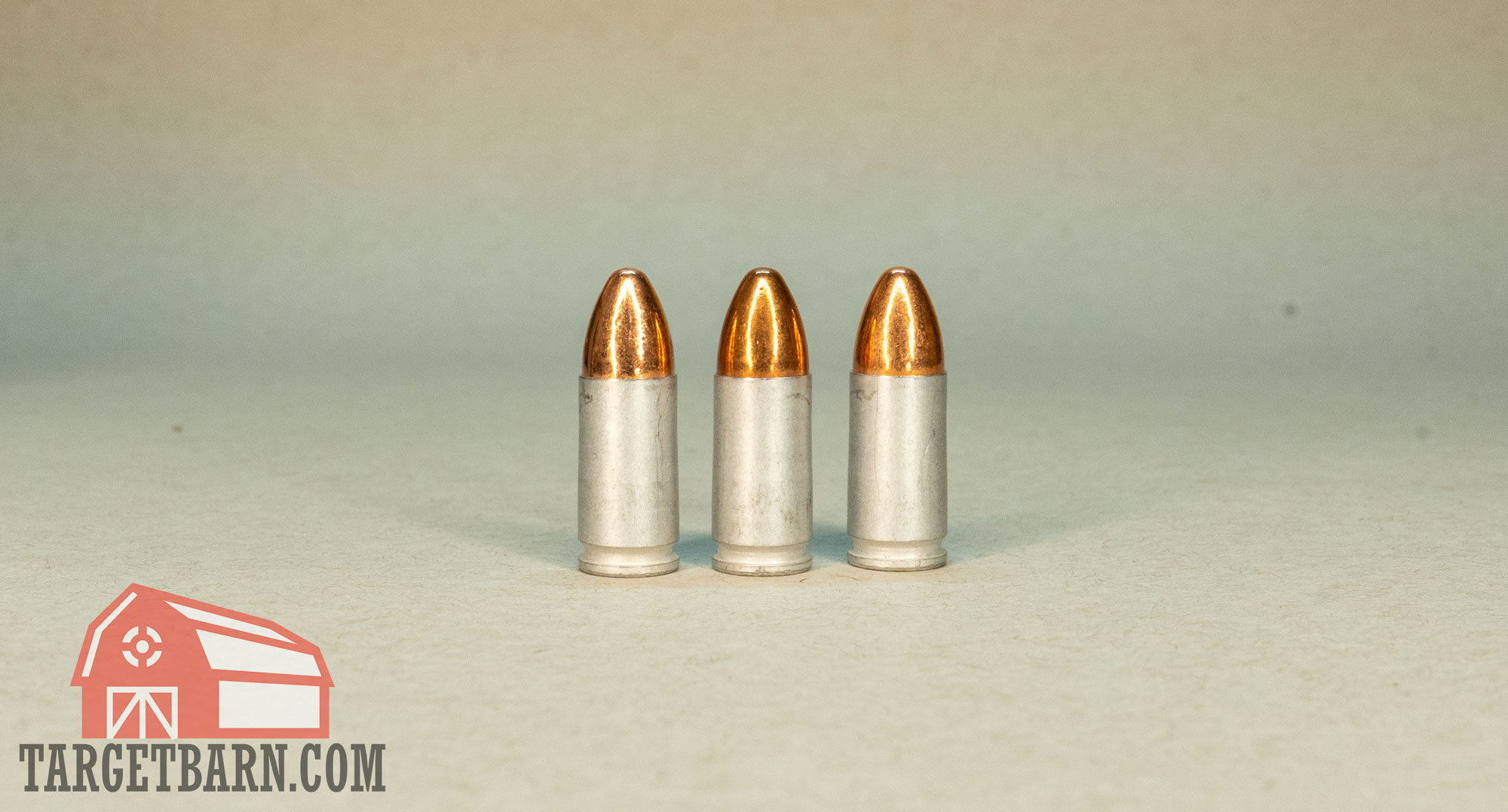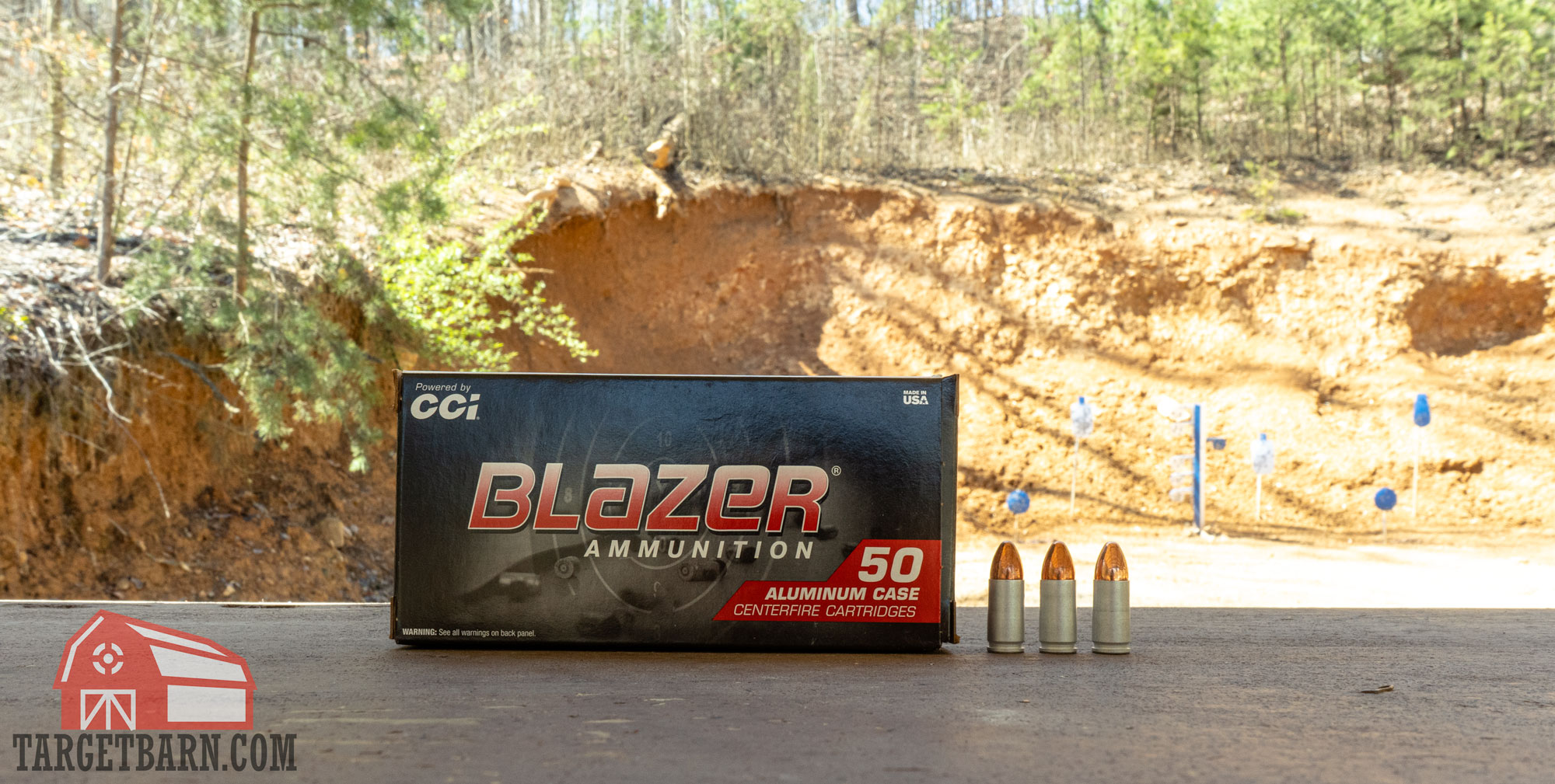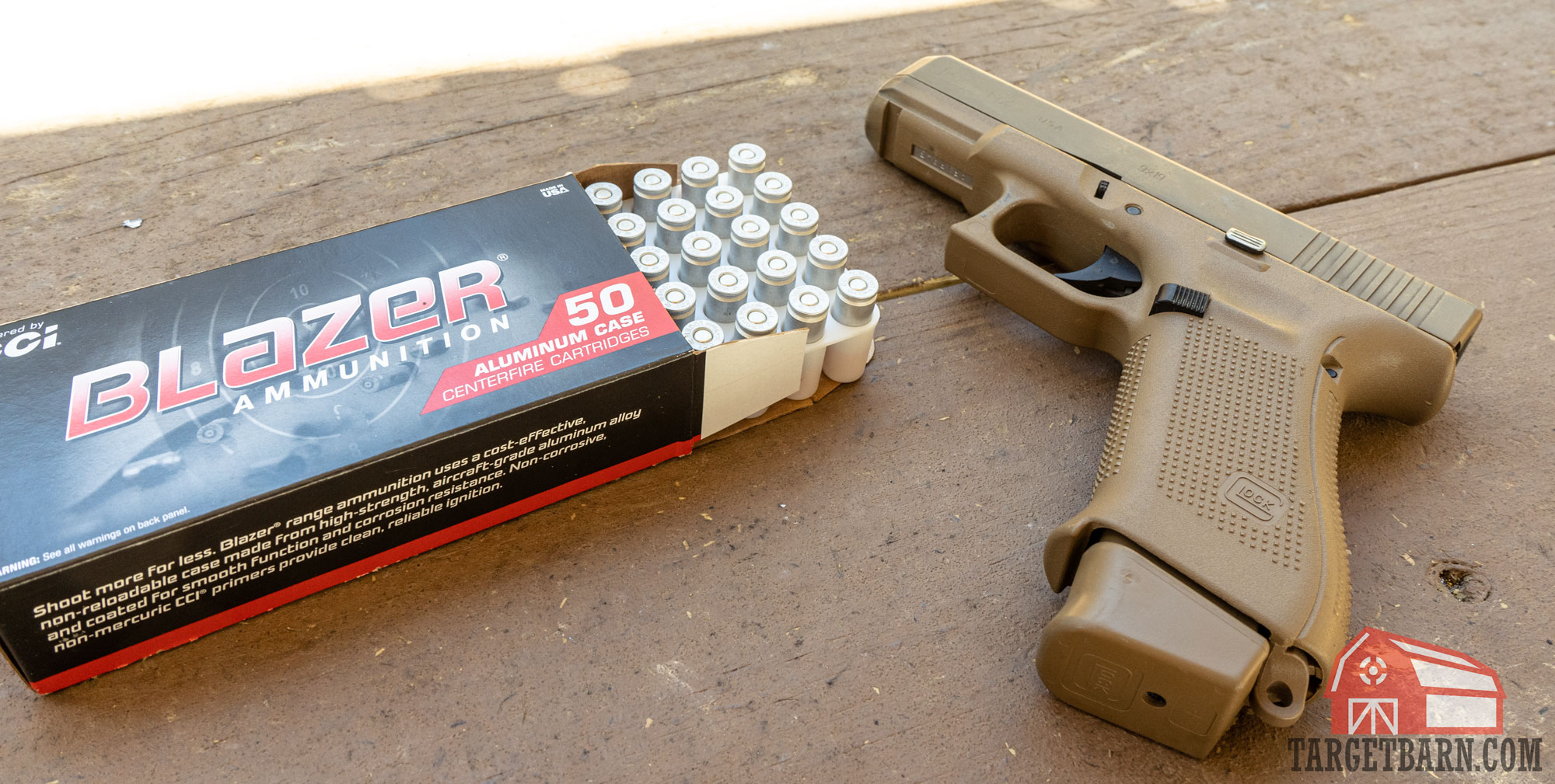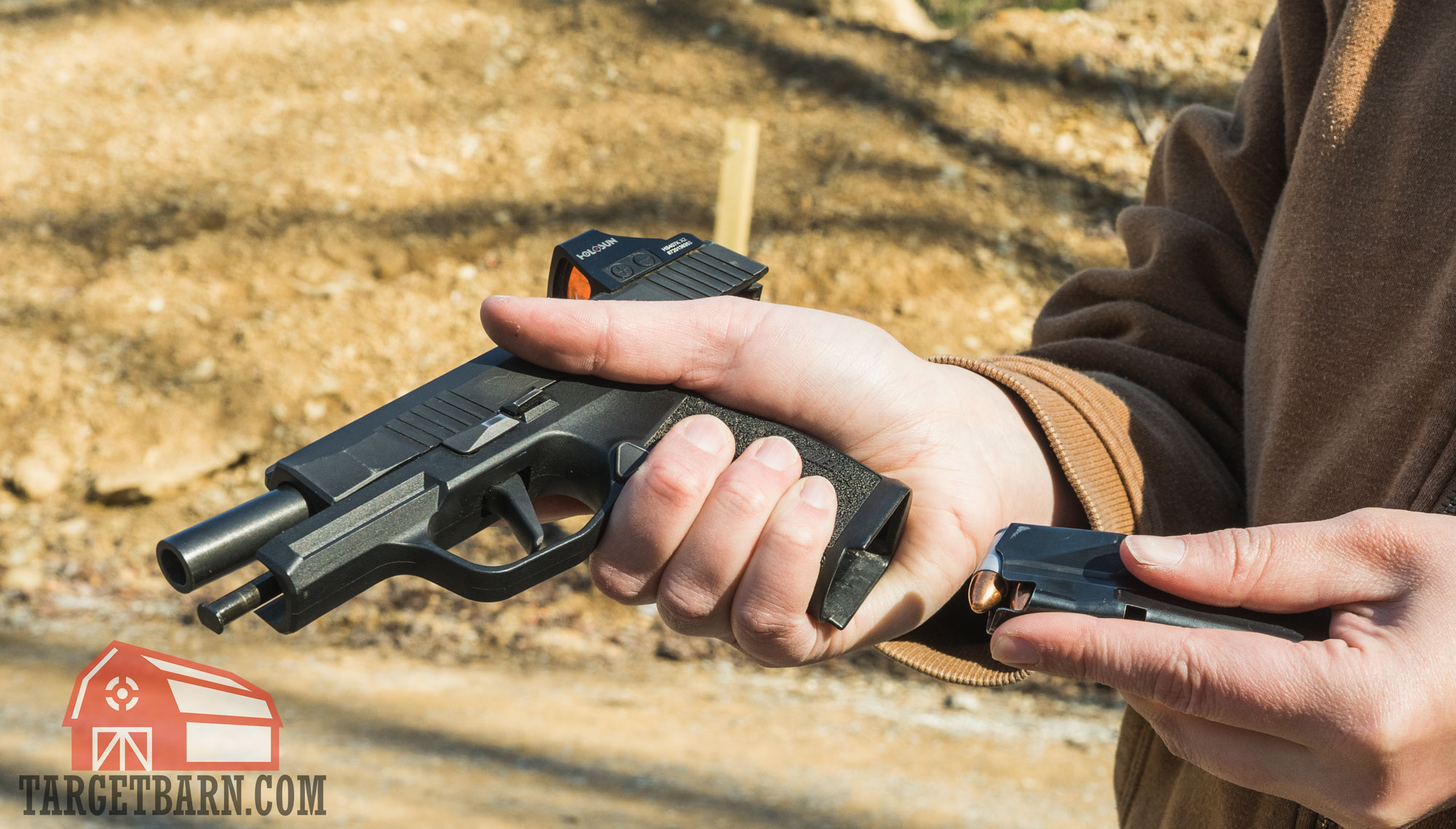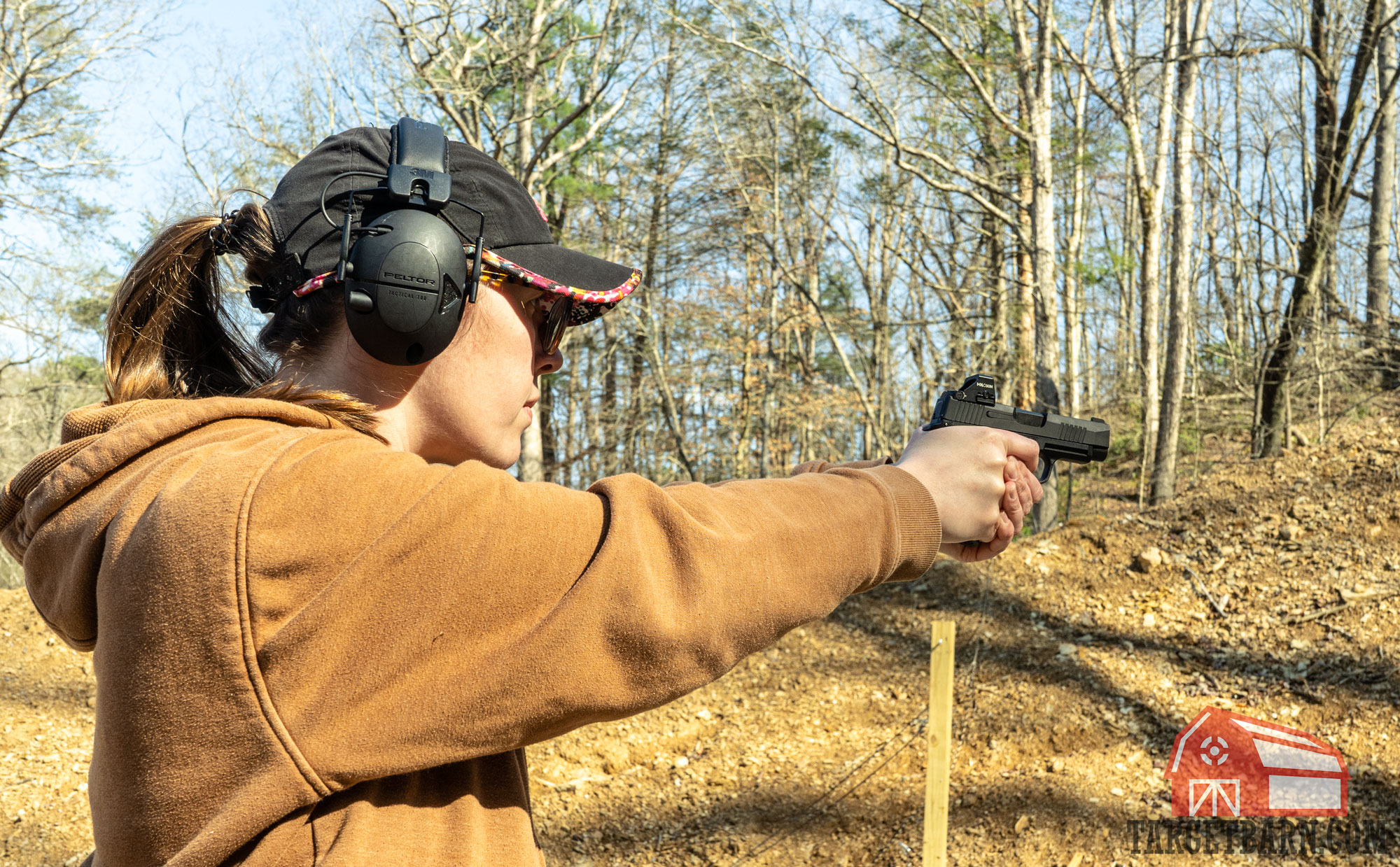If you’re on the hunt for a budget practice round, you’ve likely come across the Blazer 9mm. There is a big selection of budget range ammo on the market, but budget ammo often has reliability issues. We wanted to see how the Blazer stacked up as a range round.
Keep reading to see what we found in our Blazer 9mm review.
Blazer 9mm Review: Quick Takeaways
- The Blazer 9mm round uses 115gr. copper-plated bullets, Berdan primers, and aluminum casings
- The Blazer line uses aluminum cases whereas the Blazer Brass line uses brass cases
- I found the Blazer 9mm to be reliable and have no malfunctions out of several different pistols
- Blazer 9mm should not be used in guns with ported barrels because the copper-plating on the bullets can shear off, creating a hazard
- CCI loads Blazer in the USA
Blazer 9mm Review: The Basics
| Founded | Cascade Cartridges Inc. (CCI) in 1951; Blazer brand introduced in 1981 |
| Founder | Richard "Dick" Speer |
| Operations | Lewiston, Idaho |
| Calibers Produced | .22LR, .25 Auto, .32 Auto, .380 Auto, 9mm, .38Sp, .38Sp +P, .357 Mag, .40 S&W, 10mm, .44Sp, .44Mag, .45 ACP, .45 Colt |
| Lines Produced | Brass, Aluminum, Clean-Fire |
Blazer ammo most often refers to CCI’s budget line of aluminum-cased ammo. There are three different loads of Blazer 9mm:
- Blazer 9mm Aluminum 115gr. FMJ
- Blazer 9mm Clean Fire 124gr. TMJ
- Blazer 9mm Clean Fire 147gr. TMJ FN
For this review, I’ll be taking a hands-on look at the Blazer 9mm Aluminum 115gr. FMJ exclusively.
CCI created the Blazer Brand in the late 1970s as a way to keep manufacturing costs down. In order to create a cheaper .38 Special round, the company tested out different materials to replace costly brass shells, eventually selecting heat-treated aircraft-grade aluminum.
While the aluminum cases are cheaper than brass cases, they’re not reloadable. Because CCI knew they’d be creating a low-cost round, they outfitted the rounds with less-expensive Berdan primers which are also unsuitable for reloading.
The original aluminum casings had extraction issues out of the cylinder. However, CCI readjusted their manufacturing process, which ultimately gave them a head start in the aluminum cased ammo business.
The Blazer line officially hit the market in 1981 and now the company produces it in 13 different calibers.
If you’re curious about Blazer’s brass-cased loads, be sure to check out our CCI Blazer Brass 9mm Review.
Blazer 9mm: Pros
At the range, I really enjoyed shooting the Blazer 9mm. Many shooters avoid aluminum-cased ammo because some say they cause more malfunctions. However, I found that the Blazer 9mm ran flawlessly through the four different handguns I tested it in. It had recoil on par with other 115gr. loads and hit small steel plates easily at 15-yards.
Here are some of the other upsides to the Blazer 9mm Aluminum 115gr. FMJ round.
Affordability
If you’re looking for just about the cheapest 9mm ammo you can find, aluminum-cased ammo is the way to go.
The CCI Blazer 9mm Aluminum 115gr. is consistently one of the lowest cost rounds available, while still being reliable and easy to find available.
Made in the USA
You can feel good about shooting the Blazer 9mm round because it’s made right here in the USA.
Lewiston, Idaho is home to CCI’s manufacturing plant that employs around 650 workers.
Blazer 9mm: Cons
At the range, I didn’t experience any issues with the Blazer 9mm. However, here are a couple downsides of the Blazer 9mm round.
Unsafe for Ported Barrels
The Blazer 9mm uses a copper-plated bullet that is not safe for guns with ported barrels. That’s because the bullet’s copper plating can shear off in the ports of the barrel. This can lead to the material flying out of the gun, which could potentially be a hazard, especially if it hits your eyes.
CCI recommends their Speer Lawman line for ported barrels. The company offers 9mm Speer Lawman 115gr. TMJ, 9mm Speer Lawman 124gr. TMJ, and 9mm Speer Lawman 147gr. TMJ.
Reliability Issues
Many shooters avoid aluminum-cased ammo because it can be prone to cause feeding issues and malfunctions.
As I said above, I had no reliability issues with the Blazer 9mm round. This could be because CCI has nailed down their loadings or because the guns I tested with aren’t picky about ammo.
If you’re worried about the reliability of Blazer 9mm with your gun, I suggest picking up a couple boxes and testing it out.
Not Reloadable
The aluminum cases used in the Blazer 9mm are not reloadable, which may be a downside for some shooters. However, if you’re not reloading your own ammo or collecting brass cases after you shoot, you have nothing to worry about.
Blazer 9mm Velocity
| Gun | Barrel Length | 5-Shot Average Muzzle Velocity (fps) | 5-Shot Average Muzzle Energy (ft/lbs) |
|---|---|---|---|
| Sig Sauer P365XL | 3.7" | 1093 | 305 |
| Glock 19X | 4.02" | 1138 | 331 |
| Smith & Wesson M&P Pro 9 | 5" | 1153 | 340 |
I took a chronograph to the range to measure the velocities of the Blazer 9mm round out of different handguns.
The guns and barrel lengths I used and their barrel lengths are:
- Sig Sauer P365xl – 3.7”
- Glock 19X – 4.02”
- Smith & Wesson M&P Pro – 5”
CCI advertises a muzzle velocity of 1145fps out of a 4-inch barrel. In my testing, I found that a 5-shot string of Blazer 9mm had an average muzzle velocity of 1138fps out of a 4.02-inch barrel gun. That’s pretty consistent in my opinion.
Blazer Ammo Review: Final Thoughts
If you’re looking for some of the cheapest 9mm ammo you can find for the range, I can confidently recommend the Blazer 9mm 115gr. FMJ Aluminum round.
Whichever round you load up with for range day, Target Barn has you covered with great prices and quick shipping. Stay safe and shoot straight!

